CAPP

The Risk Communication, Assessment, and Prioritization Program (CAPP) is designed to assist an organization in characterizing issues, internally communicating risk information, assessing the organization's ability to manage risk, and effectively prioritizing new risk management actions.
CAPP is a unique, PC-based software program that consists of four tools. Identify Issues is used to brainstorm potential environmental issues. Reassess/Monitor Issues is used to manage files that also provides information on the processing status of each issue. QuIC (Qualitative Issue Characterization) is used to gather, record, and communicate information on issues. SEQUEL (SEmi-QUantitative EvaLuation) is used to characterize the risks associated with an issue and the organization's ability to manage those risks. SEQUEL is also used to provide a structured approach for comparing and prioritizing issues.
The CAPP was developed for the Western Area Power Administration (Western) to address a wide array of important environmental issues associated with the operation of its extensive network of power lines, dispatch centers, substations, maintenance facilities, and property holdings across 15 western states. In particular, the CAPP is working to reshape how managers and staff members deal with difficult issues. It does this by:
- facilitating internal risk communication
- guiding staff in systematically evaluating environmental issues
- scoring the potential human health/ecosystem, business, regulatory, and public relations impacts of environmental issues
- guiding staff in explicitly evaluating their organization's ability to manage the risks associated with individual environmental issues
- providing summarized risk management information that can help decision makers make more effective business decisions.
In the following figures, sample CAPP screens are displayed. Figure 1 shows the CAPP Main Menu. Figures 2-4 shows the QuIC folder system for recording qualitative information on environmental issues. Figure 5 shows the QuIC communications menu. Figures 6-8 show SEQUEL forms used for evaluating risk and the organization's ability to manage risk. Figure 9 shows the SEQUEL risk evaluation matrix.
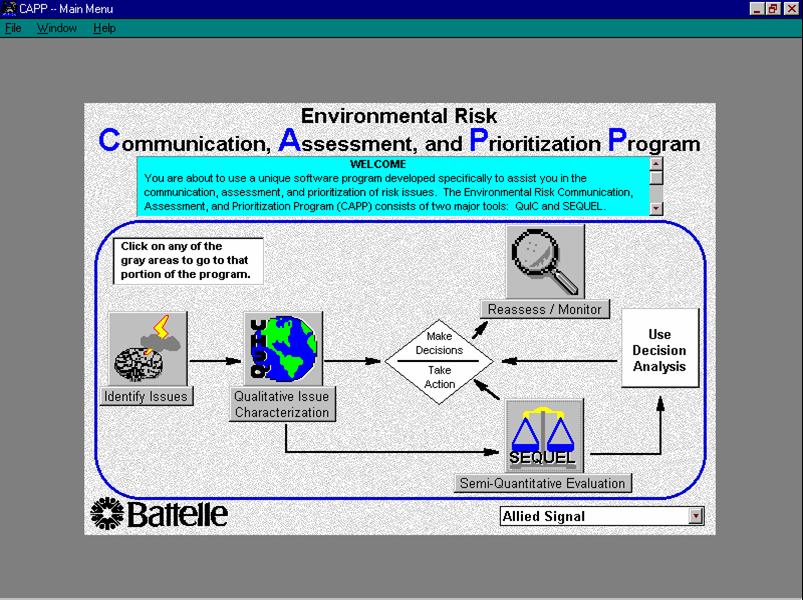
Figure 1. The CAPP Main Menu. Each of the four CAPP tools can be accessed from this menu. The CAPP model's two main tools are QuIC and SEQUEL. The QuIC model supports the development of a qualitative characterization of an issue (including support for risk communication). The SEQUEL model supports the semi-quantitative assessment of risk and the ability of the organization to manage that risk.
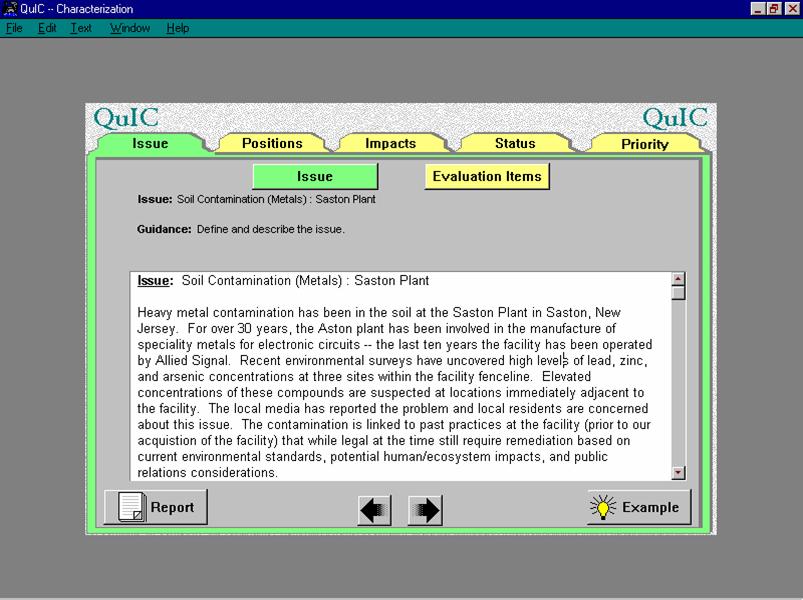
Figure 2. The QuIC Input Forms - Issue Description. In QuIC, issues are characterized using a series of "folders". In the first folder, the issue is introduced. A more detailed description of specific elements of this issue is entered in other folders. Text material can easily be cut and pasted into the folders from other electronic files. The Example button (lower right) provides a example of the sort of input requested to complete this folder. The Report button (lower left) provides a text report of all the material collected this issue. This report can be printed or stored as a text file.
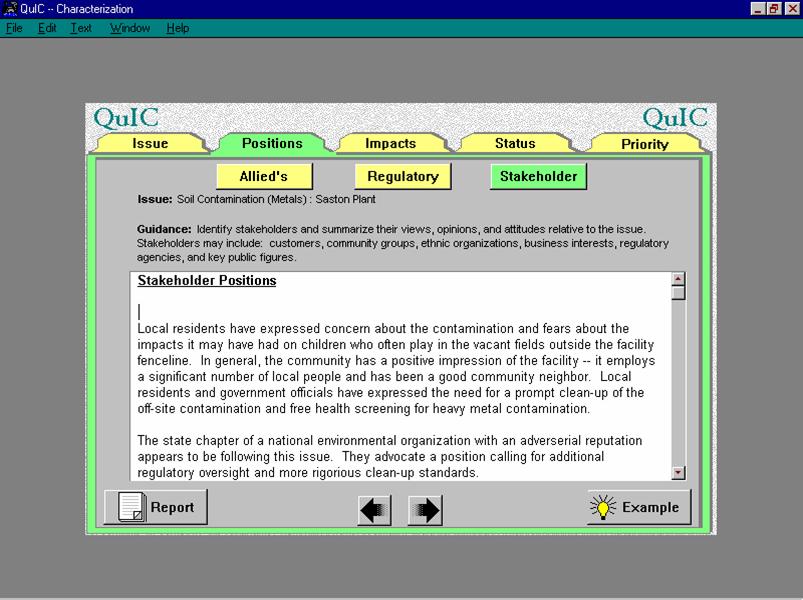
Figure 3. The QuIC Input Forms - Position on the Issue. This folder is used to characterize the position of the company, regulators, and stakeholders on this issue. The sub-folder displayed above is used to characterize the views of important stakeholders (e.g., members of the local community, state legislators, journalists, environmental groups).
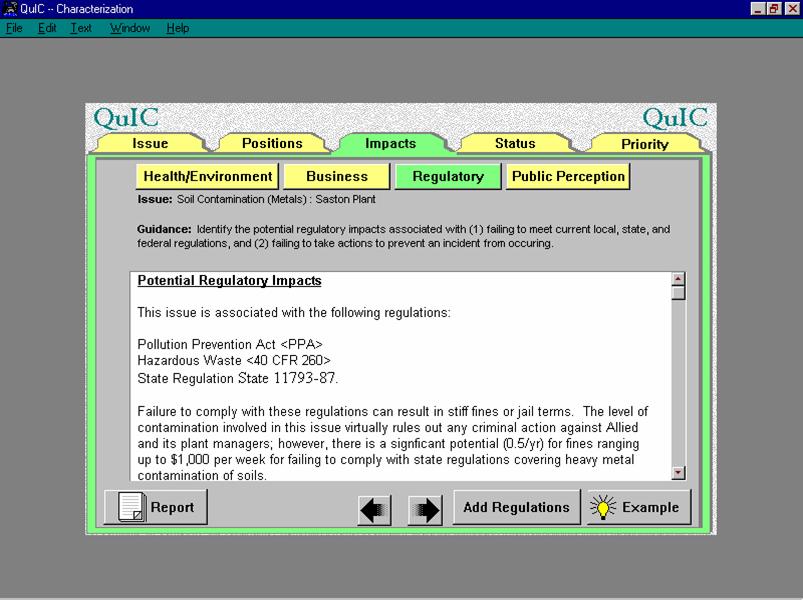
Figure 4. The QuIC Input Forms - Impacts. This folder is used to characterize the potential impacts of this issue on public health and the environment, business, regulatory, and public perception. These environment-focused impact categories can be changed to support CAPP applications in other arenas (e.g., critical infrastructure protection). The sub-folder displayed above is used to record the potential impacts on the organization of regulatory actions related to this issue. The Add Regulations button (bottom, center-right) brings up a menu of pertinent regulations - selecting a specific regulation from the menu copies its title and a brief summary into the folder.
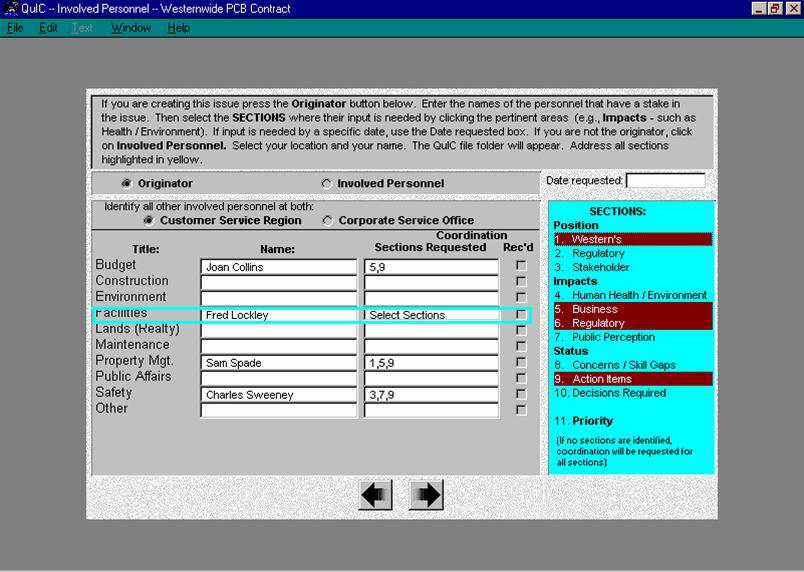
Figure 5. The QuIC Communication Menu. Using this menu, the user requests customized input from staff members with different areas of expertise. QuIC files can be shared electronically with other staff members. Input form multiple contributors can easily be combined and edited.
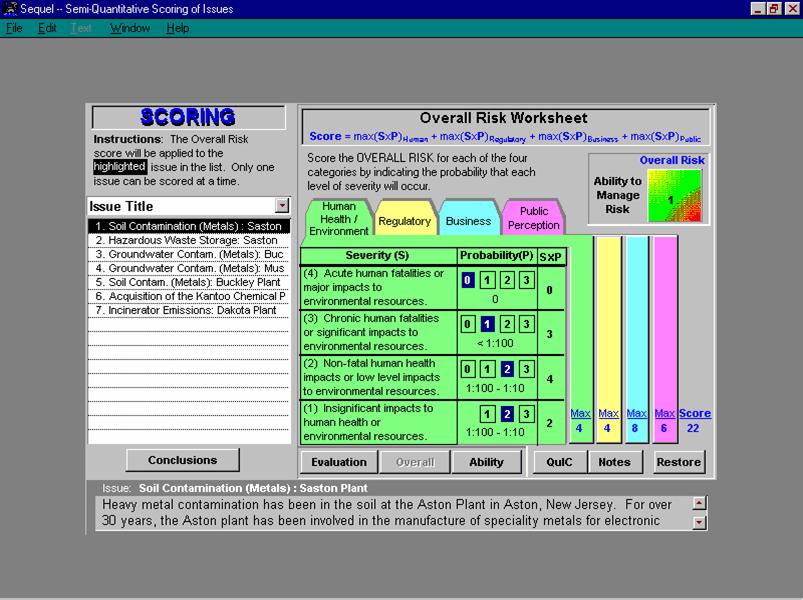
Figure 6. The SEQUEL Overall Risk Scoring Worksheet. SEQUEL assists the user in taking the qualitative information collected during the QuIC process and using it to produce semi-quantitative estimates of risk and the organization's ability to manage that risk. Risk is scored in four different impact categories - the same categories already characterized in QuIC. In this figure, the user is generating risk estimates by evaluating the probability of different adverse outcomes to human health and the environment.
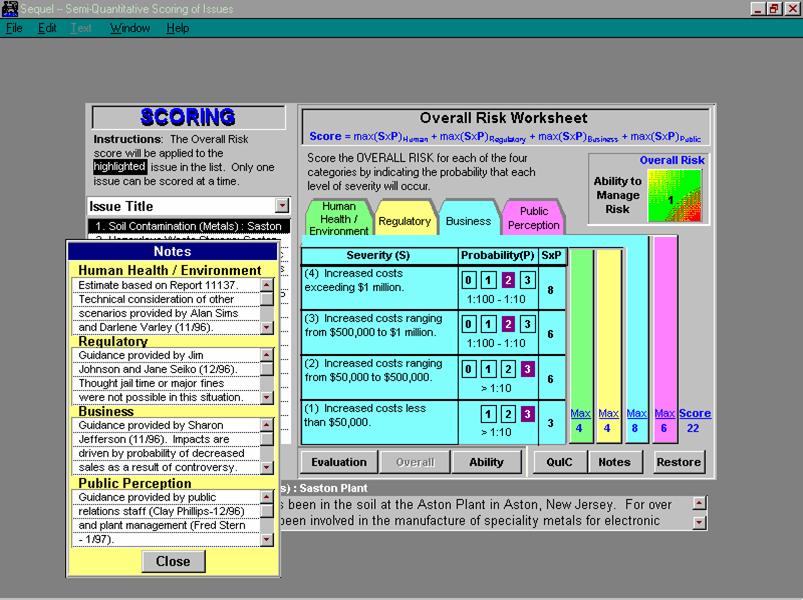
Figure 7. The SEQUEL Overall Risk Scoring Worksheet - Additional Features. In this worksheet, business risk is being scored for the highlighted issue. The "Notes" feature has been activated and text descriptions to justify user choices can be entered on the left. The QuIC button (lower center-right) can be used to promptly review QuIC input for this issue.
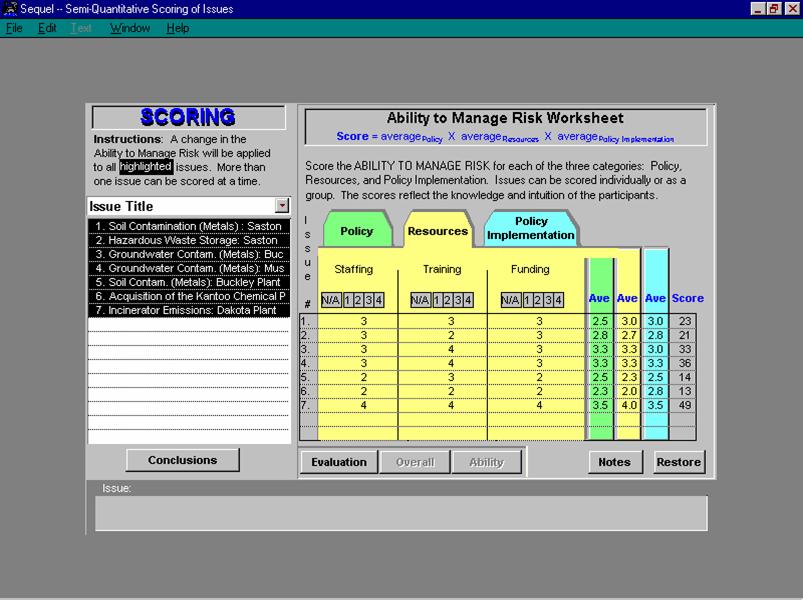
Figure 8. The SEQUEL Ability to Manage Risk Scoring Menu. The ability to manage the risk associated with an issue is evaluated in three broad categories, each with its own evaluation criteria. In this worksheet, results for the "Resources" category is being evaluated for a group of seven issues. The evaluation criteria are staffing, staff training, and funding. SEQUEL allows users to play "what if" games with results to find ways to maximize their risk management performance.
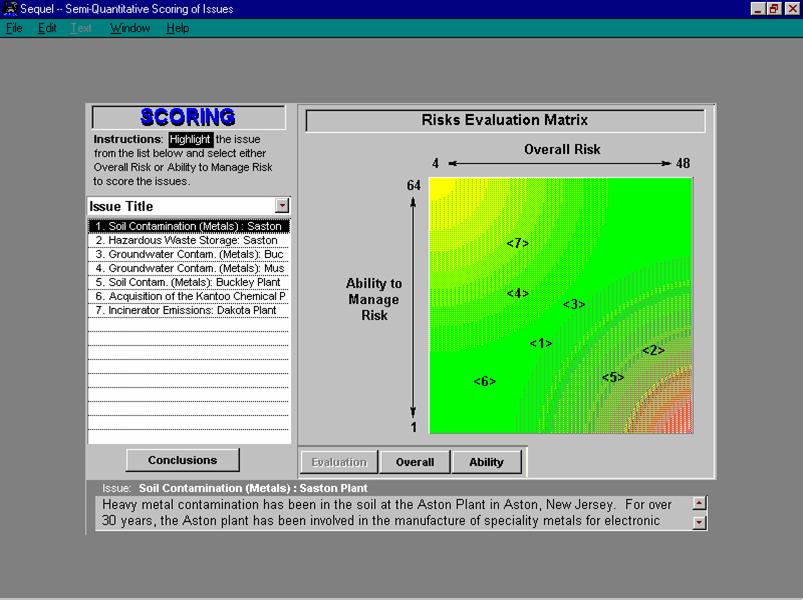
Figure 9. The SEQUEL Risk Evaluation Matrix Menu. In this example, estimates of the risks associated with seven different issues are plotted against the ability of the organization to manage these risks. The risk evaluation matrix and other SEQUEL graphical displays are useful for assessment, budgeting, and decision-making purposes; including the allocation of resources to more efficiently manage risks.
While the CAPP was developed to assist organizations in improving their risk management program in the environmental arena, it can be applied to address other applications (e.g., critical infrastructure protection, cyber security, environmental restoration planning). The CAPP approach emphasizes a modular design and system flexibility to facilitate its modification for other applications.
For further information, contact:
Cliff Glantz
Battelle, PO Box 999 K9-30
Richland, WA 99352
Phone: (509) 375-2166
email: cliff.glantz@pnl.gov